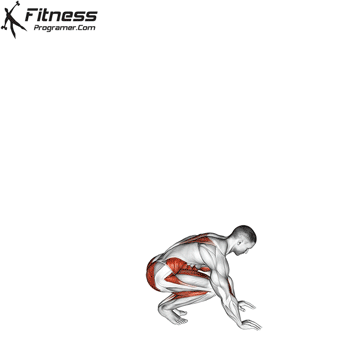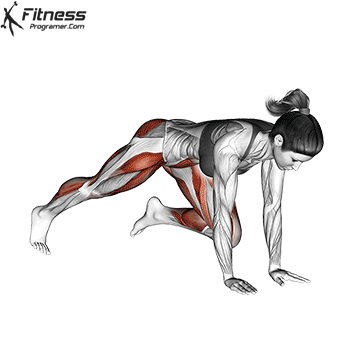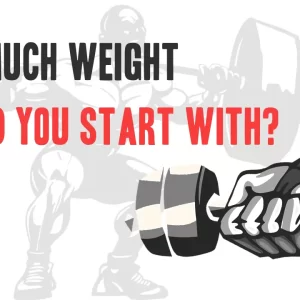Contents
We all know the struggle. Busy lives make squeezing in a workout feel like an impossible feat. But what if you could get a sweat-session in, with proven health benefits, in just 10 minutes? That’s the promise of High-Intensity Interval Training (HIIT) cardio. But is 10 minutes of HIIT really enough?
Overview of HIIT
HIIT involves alternating between intense exercise bursts and brief rest periods. This approach elevates your heart rate to near-maximal levels, pushing your body’s physiological limits. However, High-Intensity Interval Training (HIIT) presents a compelling solution for busy individuals seeking effective exercise within a condensed timeframe.



The Science Behind 10-Minute HIIT Workouts
A study in the journal PLoS ONE showed that just one minute of intense exercise in a 10-minute workout can deliver similar benefits for your heart and metabolism as 50 minutes of moderate-intensity exercise.
Research suggests that a well-designed 10-minute HIIT workout can be as effective as a longer, moderate-intensity cardio session in terms of improving cardiovascular health and metabolic function.
Benefits of 10-Minute HIIT Cardio
Time Efficiency: The primary appeal of a 10-minute HIIT workout is its efficiency. For those who struggle to find time for longer sessions, these short bursts of exercise can fit into a busy day without sacrificing other responsibilities.
Metabolic Boost: HIIT is known to boost your metabolism, helping you burn calories even after the workout is over. This post-exercise oxygen consumption (EPOC) effect means you continue to burn calories at an elevated rate for hours after finishing your workout.
Cardiovascular Health: Studies indicate that HIIT can improve cardiovascular health by increasing heart rate variability and enhancing heart function. Even a 10-minute session can significantly impact your heart health over time.
Fat Loss: The intense nature of HIIT not only aids in fat loss but also helps in preserving and building lean muscle mass. This dual benefit makes it a powerful tool for those looking to tone up and improve body composition.
Mental Health: Exercise, including HIIT, has been shown to release endorphins, which can improve mood and reduce stress. The short, intense nature of HIIT can provide a quick mental health boost in a short period.
Structuring a 10-Minute HIIT Cardio
A typical 10-minute HIIT session might include the following:
- Warm-Up (1 minute): Light jogging or dynamic stretching to prepare your muscles and joints.
- High-Intensity Intervals (6 minutes): Alternate between 30 seconds of intense exercise (such as sprinting, jumping jacks, or burpees) and 30 seconds of rest or low-intensity activity (such as walking or slow jogging).
- Cool-Down (1 minute): Gentle stretching or slow walking to help your heart rate gradually return to normal.
Optimizing the 10-Minute HIIT Session
While 10 minutes presents a fantastic starting point, particularly for beginners, it may not be the ideal duration for everyone. Here are some factors to consider for individualization:
- Fitness Level: For those new to exercise, significant benefits can be experienced from shorter HIIT sessions. As fitness levels improve, consider extending workout duration or frequency.
- Specific Goals: If weight loss is a primary objective, incorporating a healthy diet alongside HIIT is crucial. For general fitness improvement, however, 10 minutes can be highly effective.
- Body Awareness: Always prioritize proper form and listen to your body’s limitations. Gradually increase intensity and duration as fitness progresses to avoid injury.
Maximizing Your 10-Minute HIIT Workout
To optimize your 10-minute HIIT session, consider these strategies:
- Warm-up is Key: Don’t neglect this crucial step. It prepares your muscles and joints for the high-intensity effort to come.
- Exercise Selection: Choose exercises that engage large muscle groups for maximized calorie expenditure. Jumping jacks, burpees, and mountain climbers are excellent choices.
- Push for Maximum Effort: During the high-intensity intervals, strive for near-maximal effort to maximize the benefits.
- Strategic Rest Periods: Utilize rest periods effectively to recover sufficiently for the subsequent high-intensity interval.
Frequency in 10 Minute HIIT Training
Beginners
Frequency: 2-3 times per week
- Reasoning: Starting with 2-3 sessions allows your body to adapt to the high intensity and reduces the risk of injury. It also provides ample recovery time between workouts.
Intermediate
Frequency: 3-4 times per week
- Reasoning: As your fitness level improves, you can increase the frequency to continue challenging your body. Ensure you’re still allowing for recovery days to avoid overtraining.
Advanced
Frequency: 4-5 times per week
- Reasoning: If you’re highly conditioned, you can handle more frequent HIIT sessions. However, it’s crucial to listen to your body and include rest or low-intensity days to prevent burnout and overuse injuries.
Is 10 Minutes Really Enough?
While 10 minutes of HIIT can offer significant benefits, it’s important to note that the effectiveness of such a short workout depends on the intensity level.
By incorporating well-designed 10-minute HIIT sessions into your routine, you can achieve significant improvements in cardiovascular health, metabolic function, and overall fitness.
In conclusion, yes, 10 minutes of HIIT cardio can be enough to achieve a range of fitness benefits, particularly for those with tight schedules.
By pushing yourself to your limits during those short bursts, you can maximize the benefits and make the most out of your limited time. So, next time you’re pressed for time, remember that even a 10-minute HIIT session can be a powerful tool in your fitness arsenal.
Start gradually, prioritize proper form, and enjoy the benefits of HIIT!
References:
- Gillen, J. B., Martin, B. J., MacInnis, M. J., Skelly, L. E., Tarnopolsky, M. A., & Gibala, M. J. (2016). Twelve Weeks of Sprint Interval Training Improves Indices of Cardiometabolic Health Similar to Traditional Endurance Training Despite a Five-Fold Lower Exercise Volume and Time Commitment. PLOS ONE, 11(4), e0154075.
- Metcalfe, R. S., Babraj, J. A., Fawkner, S. G., & Vollaard, N. B. (2012). Towards the minimal amount of exercise for improving metabolic health: beneficial effects of reduced-exertion high-intensity interval training. European Journal of Applied Physiology, 112(7), 2767-2775. https://doi.org/10.1007/s00421-011-2254-z



